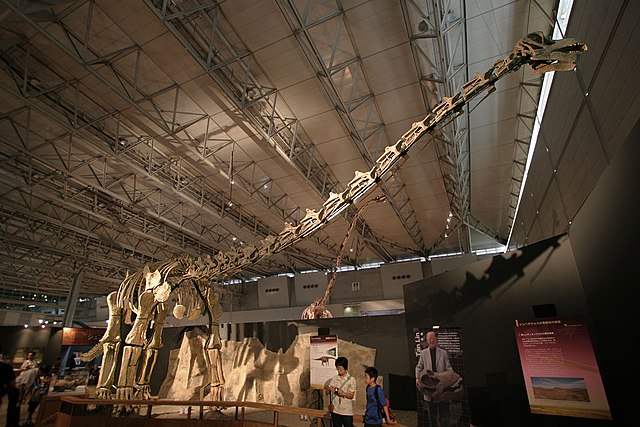Opisthocoelicaudiinae is a subfamily of titanosaurian dinosaurs from the Late Cretaceous. It was named by John McIntosh in 1990. Opisthocoelicaudiines are known from Mongolia, Argentina, and the United States. Two genera were assigned to Opisthocoelicaudiinae by Gonzalez et al. (2009): Alamosaurus and Opisthocoelicaudia, a conclusion also found by Díez Díaz et al. (2018). The hands of opisthocoelicaudiines lacked wrist bones and phalanges.
Opisthocoelicaudiinae
Titanosaurs were a diverse group of sauropod dinosaurs, including genera from all seven continents. The titanosaurs were the last surviving group of long-necked sauropods, with taxa still thriving at the time of the extinction event at the end of the Cretaceous. This group includes some of the largest land animals known to have ever existed, such as Patagotitan—estimated at 37 m (121 ft) long with a weight of 69 tonnes —and the comparably-sized Argentinosaurus and Puertasaurus from the same region.
Titanosauria
Excavation of titanosaur fossils at the Lo Hueco fossil site in Spain
Unnamed titanosaur from Japan labelled "Xinghesaurus"
Ampelosaurus, a titanosaur with osteoderms, depicted with the osteoderms arranged in a pair of rows





